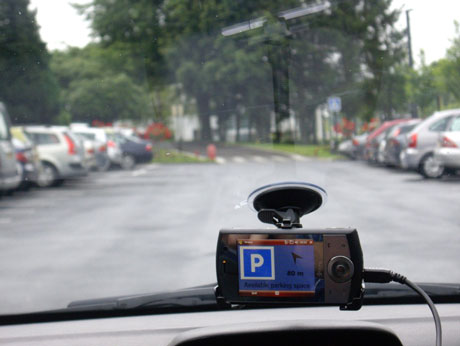by Thierry Delot and Sergio Ilarri
The importance of Vehicular Ad Hoc Networks (VANETs) is expected to increase significantly in the next few years: According to a recent survey by ABI Research, about 62% of new vehicles will be equipped with vehicle-to-vehicle (V2V) communications by 2027. This opens up a wide range of opportunities to develop different types of services for drivers, related to safety, entertainment, and information. For example, vehicles can communicate with to others information about events such as accidents, traffic jams, emergency vehicles requiring right of way, the availability of parking spaces, etc.
The use of short-range V2V communications to transmit data to neighbouring vehicles offers several advantages: they are free of charge (facilitating the cooperation needed to establish data sharing mobile ad hoc networks), they enable quick interactions among vehicles (avoiding the use of remote centralized servers), they are suitable for geographic routing (delivering messages to an area rather than to specific vehicles), they do not require the deployment of a support infrastructure, they favour privacy (by avoiding data centralization and limiting the spatial scope where messages are delivered), etc. However, the typical V2V communications of vehicular networks also present significant challenges for the data management community, requiring new data management and query processing techniques [1]. For instance, since two vehicles that want to exchange information will usually only be within communication range for a short time, a procedure is needed to limit the amount of data to be transmitted. To this end, evaluating the relevance of data is a key. This is also important to avoid distracting the driver by presenting him/her irrelevant information.
In our research, we focus on the development of the system VESPA (Vehicular Event Sharing with a mobile P2P Architecture) [2, 3], designed for vehicles to share information in inter-vehicle ad-hoc networks. We started this project in 2007 as a joint collaboration between the LAMIH research center at the University of Valenciennes (France) and the Distributed Information Systems (SID) group at the University of Zaragoza (Spain), and the project also now has collaborators in other institutions, such as Inria Lille Nord Europe and Télécom SudParis (France). Since then, we have developed several prototypes for smartphones and evaluated our approaches using simulations.


We focus on several data management issues. First, we consider the problem of evaluating the relevance of data items exchanged in the network (to decide which data should be disseminated and which data should be shown to the driver), using techniques based on geographic computations in the Euclidean space as well as techniques exploiting road network information available in digital road maps. Second, we propose suitable data dissemination protocols based on the relevance of the data items. Third, we propose data aggregation approaches that can help the vehicles to extract and share knowledge about the environment by summarizing data items (eg, to identify areas where it is easier to park or areas where accidents are more likely). Fourth, we propose solutions for the problem of sharing information about scarce resources such as available parking spaces; this is important because communicating the information to many vehicles without control could easily lead to fruitless competition among drivers for the same resource. Fifth, we tackle the problem of processing queries that need to access remote data; in relation to this topic we have analyzed the challenge of routing the query results to the vehicle submitting the query and we are currently studying the potential of mobile agent technology for routing queries and results to the appropriate nodes. The exchange of multimedia information (eg, to provide pictures about accidents or parking spaces to other vehicles) is also within our research interest. Finally, we are studying the potential benefits of applying other data management and semantic techniques. We envision a future where intelligent vehicles will be equipped with V2V communications and perform multiple data management tasks.
Links:
Website of VESPA: http://www.univ-valenciennes.fr/ROI/SID/tdelot/vespa/
V2V Penetration in New Vehicles to Reach 62% by 2027, ABI Research: http://www.abiresearch.com/press/v2v-penetration-in-new-vehicles-to-reach-62-by-202 [Last access: May 8, 2013].
References:
[1] T. Delot, S. Ilarri: “Introduction to the Special Issue on Data Management in Vehicular Networks”, Transportation Research Part C: Emerging Technologies, 23: 1-2, Elsevier, 2012
[2] N. Cenerario, T. Delot, S. Ilarri: “A Content-Based Dissemination Protocol for VANETs: Exploiting the Encounter Probability”, IEEE TITS, 12(3): 771-782, 2011
[3] T. Delot, S. Ilarri, N. Cenerario, T. Hien: “Event Sharing in Vehicular Networks Using Geographic Vectors and Maps”, Mobile Information Systems, 7(1): 21-44, IOS Press, 2011.
Please contact:
Thierry Delot
University of Valenciennes, France
E-mail:
Sergio Ilarri
University of Zaragoza, Spain
E-mail:











